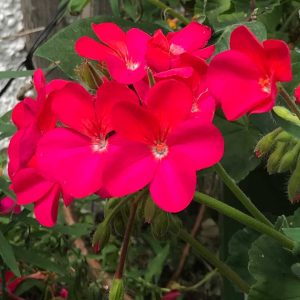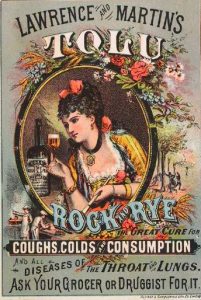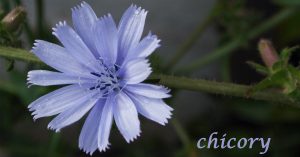The Extraordinary Intelligence of Your Potted Geranium
Edited: November 13, 2022
 We know them as geraniums. Those glorious bright red staples of our summer bedding and window boxes with their velvety, scented leaves and ability to withstand the driest of summers, they are popular all over Europe and have even been elected the Swiss national plant. However Pelargonium Graveolens (to give it its Latin name) is a fairly recent immigrant, only arriving in Europe from its native South Africa in the 17th century.
We know them as geraniums. Those glorious bright red staples of our summer bedding and window boxes with their velvety, scented leaves and ability to withstand the driest of summers, they are popular all over Europe and have even been elected the Swiss national plant. However Pelargonium Graveolens (to give it its Latin name) is a fairly recent immigrant, only arriving in Europe from its native South Africa in the 17th century.
Known as ‘umackaloabo’ which means ‘bad cough’ in the Zulu language, it was the source of a traditional remedy used for centuries by the Zulu, Basuto, Xhosa and Mfenfi people as a cure for coughs and upper respiratory infections, tuberculosis and gastrointestinal complaints.
The remedy was brought to Europe by an Englishman, Charles Stevens, in the 1890s. Aged 17, Charles Stevens had been diagnosed with tuberculosis and sent by his doctors to South Africa to recover. Whilst there he was treated with umackaloabo and came back to England free of the disease and determined to share news of this remarkable medicinal herb with the rest of Europe. He funded and publicised his remedy and it soon gained a reputation as a successful treatment for tuberculosis, known as consumption.
Although some patients did recover naturally, tuberculosis was incurable by the medical profession in the days before antibiotics, the only available remedy for this disease being fresh air, sunshine, good food and a strengthening of the system to overcome the disease. 
However, then as now, health was big business. Doctors and other enterprising individuals concocted potions of dubious value which they advertised as Patent Medicines These mostly contained opium or alcohol in a sugary syrup which at least made their patients feel better whilst leaving the disease unaffected.
Steven’s Consumption Cure, as it was titled, naturally made headlines across Europe and simultaneously caused consternation amongst the medical profession who quickly moved to shut him down as a charlatan and a quack. Doctors and their allies in the Patent Medicines business had a vested interest in selling their patent medicines for incurable diseases – some might think that nothing much has changed.
A fascinating and very readable account of Steven’s battle with the medical establishment and eventually even the British government can be found here: https://www.ncbi.nlm.nih.gov/pmc/articles/PMC1279998/
So, moving on to the present day, there are now a plethora of studies that show just how right the South African tribal doctors and Charles Stevens were. The heart-shaped velvety leaves of the pelargonium might well hold the answer to the treatment of multi-drug resistant diseases like bronchitis which kills millions of people every year and can no longer be routinely treated with antibiotics.
It was thought that traditional uses of pelargonium species for symptoms such as diarrhoea and dysentery were due to the astringent nature of their roots but recent research has shown that it is the its ant-bacterial, anti-viral and anti-fungal properties that fight the actual causes of the conditions rather than the effects.
Like many other plant-based medicines, pelargonium is what is known as an ‘intelligent’ remedy – it does not affect the whole body but, in the nature of holistic therapy, works with the body to fight and overcome disease. Containing more than 65 identified phytochemicals known to fight viruses, bacteria, inflammation and boost the immune system, pelargoniums are at the forefront of current research into the use of plant-based medicines as we enter an age when synthetic drugs are becoming ineffective due to overuse.
As The National Center for Biotechnology Information (a US institution which describes itself as ‘advancing science and health by providing access to biomedical and genomic information) says on its website:
“Studying herbs such as P. sidoides for effects on the non-specific immune system may lead to the identification of novel chemical structures on which newer therapeutic agents can be derived and provide additional insight into the mode of action at the molecular level. This example provides a compelling argument for continuing the exploration of Nature and traditional medical systems as a source of therapeutically useful herbal medicines which satisfy current criteria of quality, safety and efficacy for an evidence-based therapy.”
And elsewhere: “This example provides a compelling argument for continuing the exploration of Nature and traditional medical systems as a source of therapeutically useful herbal medicines.”
You won’t be surprised to know that there are lots of patents pending on the use of pelargonium by Big Pharma.
 Accredited school
Accredited school
